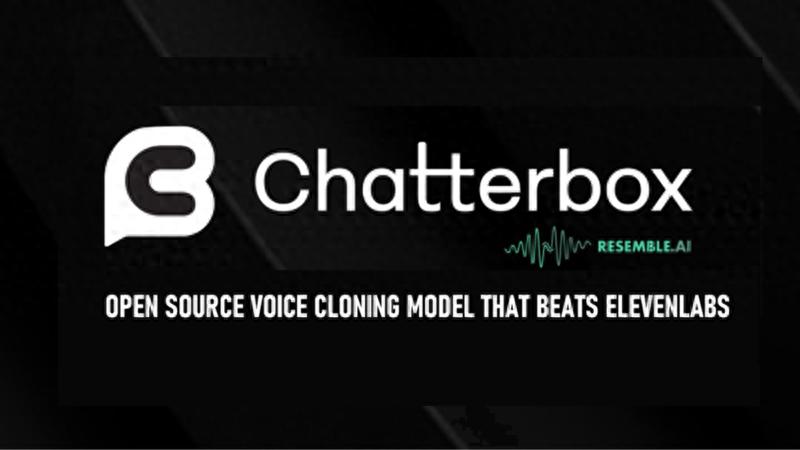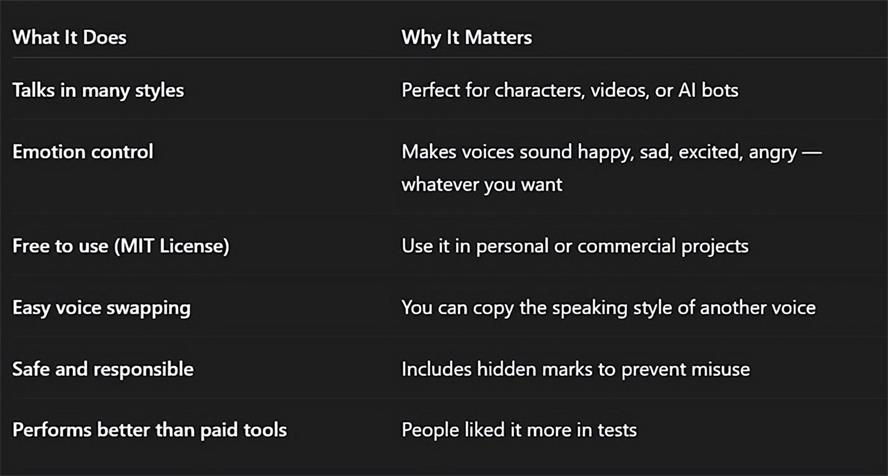Make Your AI Talk Like an Oscar-Winning Actor — Meet Chatterbox (Free & Open-Source)
In the rapidly evolving landscape of AI-generated speech, Chatterbox emerges as a groundbreaking open-source text-to-speech (TTS) model that challenges the dominance of proprietary solutions. Developed by Resemble AI and released under the permissive MIT license, Chatterbox offers unparalleled control over emotional expression, real-time synthesis capabilities, and zero-shot voice cloning—all without the constraints of commercial licensing.

Key Features of Chatterbox
1. Emotion Exaggeration Control
Chatterbox introduces a novel feature: emotion exaggeration control, allowing users to modulate the emotional intensity of synthesized speech. By adjusting a simple parameter, developers can fine-tune the expressiveness of the output, ranging from monotone to highly dramatic tones. This level of control is particularly beneficial for applications requiring nuanced emotional delivery, such as storytelling, gaming, and virtual assistants.
2. Zero-Shot Voice Cloning
Leveraging advanced machine learning techniques, Chatterbox enables zero-shot voice cloning, requiring only a few seconds of reference audio to replicate a voice. This capability eliminates the need for extensive training data, streamlining the process of creating personalized voice models for diverse applications.
3. Real-Time Speech Synthesis
With an inference latency of under 200 milliseconds, Chatterbox supports real-time speech synthesis, making it suitable for interactive applications like live virtual assistants, gaming NPCs, and real-time dubbing. Its lightweight architecture ensures compatibility with standard hardware configurations.
4. Built-In Watermarking for Ethical Use
To address concerns about misuse, Chatterbox incorporates perceptual watermarking in its audio outputs. This feature embeds an inaudible signature within the synthesized speech, facilitating traceability and promoting responsible deployment of voice cloning technology.

Performance Benchmark: Chatterbox vs. ElevenLabs
In blind listening tests, Chatterbox has demonstrated superior performance compared to established commercial TTS solutions like ElevenLabs. A study revealed that 63.75% of participants preferred Chatterbox's output for its naturalness and emotional expressiveness. This preference underscores Chatterbox's potential as a formidable alternative in the TTS domain.
| Feature | Chatterbox | ElevenLabs |
|---|---|---|
| License | MIT (Open-Source) | Proprietary |
| Emotion Control | Adjustable via parameter | Limited |
| Voice Cloning | Zero-shot (few seconds of audio) | Requires more data |
| Real-Time Synthesis | Yes (<200ms latency) | No |
| Watermarking | Yes | Not specified |
| Cost | Free | Paid |
Practical Applications of Chatterbox
- Content Creation: Enhance videos, podcasts, and audiobooks with expressive, cloned voices.
- Gaming: Develop dynamic NPC dialogues with varied emotional tones.
- Virtual Assistants: Implement real-time, emotionally responsive speech in AI assistants.
- Education: Create engaging e-learning materials with tailored voiceovers.
Getting Started with Chatterbox
To explore Chatterbox's capabilities:
- Online Demo: Experience Chatterbox directly in your browser via the Hugging Face Gradio app.
- Installation: Install the model locally using pip: pip install chatterbox-tts
- GitHub Repository: Access the source code and documentation on ChatterBox in GitHub.
Chatterbox stands out as a versatile, high-performance, and ethically designed TTS solution. Its combination of emotional control, real-time synthesis, and open-source accessibility positions it as a valuable tool for developers and creators seeking to integrate advanced voice capabilities into their projects.
For more insights into AI tools and innovations, explore our AI Tools Category and stay updated with the latest trends in generative AI.